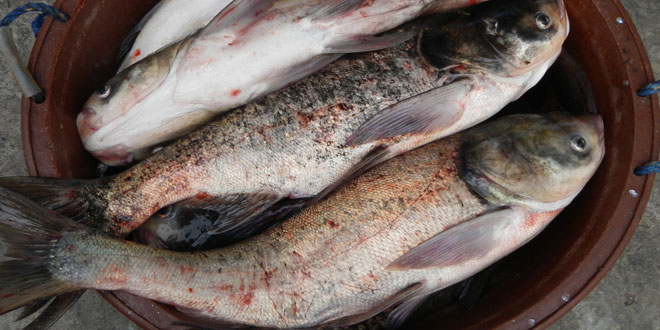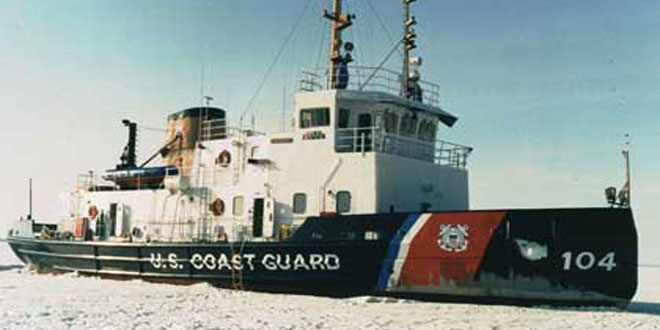TORONTO—An invitation-only March 27 Toronto meeting with the US Army Corps of Engineers (USACE) provides many more questions than it purports to answer, at least in the minds of Mary Muter, chair of the Great Lakes Section of the Sierra Club Canada, and her compatriots. In fact, some of the questions posed by Ms. Muter raise some perplexing issues in regards to the context and tact taken by the USACE report.
First off, Ms. Muter wonders why the USACE report gave such short shrift to data gathering on the Canadian side of the jointly administered repository of the world’s largest fresh water supply.
“Their study involves only US waters,” said Ms. Muter. This despite the USACE having a clear obligation to protect Great Lake waters on both sides of the border.
Not only are the waters of the Great Lakes between the two countries divided by nothing more than an invisible line drawn on a map, there are also plenty of rivers and streams connected to the Mississippi watershed running up the west side of Lakes Michigan and Huron—and the issue extends far beyond the Great Lakes themselves. “There are rivers running up into both Manitoba and Saskatchewan,” she pointed out.
This is a major concern, considering that the infiltration of the invasive species into the Mississippi watershed is nothing short of huge.
“I pointed this out to them,” said Ms. Muter, who was among the lucky few to receive an invitation to the USACE meeting in Toronto. The news is hardly new, however, Ms. Muter pointed out. The Canadian data is hardly scarce on the ground. A joint risk assessment was carried out in 2005 and another was done by the Department of Fisheries in 2009.
Those studies illustrate a sobering reality. “Within five years of the Asian carp arriving in the system it will have spread to all of Lake Huron, all of Georgian Bay and all of Lake Erie.”
Despite the lack of Canadian data, the USACE report is a ponderous tome. “It is so extensive that it is hard to read all the way through from beginning to end,” said Ms. Muter. “They did not mention it at all in their summary readings at the beginning of the meeting.”
The USACE has listed the options contained within their report, including the status quo, which Ms. Muter notes is the continuation of an electrical barrier aimed at keeping the Asian and grass carp out of the Great Lakes system.
“The USACE took videos of the nets and found schools of four inch fish swimming through the nets,” she said. “To me that says that the status quo is not an option.”
Although the meetings on the report held in the US were open to the public, and heavily attended, the Canadian meeting had barely 50 people in the room. “Most of those were government types,” said Ms. Muter. “I counted only a handful of people like myself who could be thought of as the general public.”
The opportunities for Canadians to have input into the USACE report have been very thin on the ground. “Are we going to get another opportunity to have input?” asked Ms. Muter. She pointed out that the opportunity to send in comments on the report ended at 5 pm on Monday.
The only option contained in the USACE report that Ms. Muter considers a viable solution is to physically separate the water systems, but herein lies a rub. “There are two ways of doing that,” said Ms. Muter. “In the report they list an incredibly high cost of $17 billion.”
Part of the reason for the high cost estimate is the addition of renovating the City of Chicago water and sewage system to enable it to discharge back into the Great Lakes—but those refits to the Chicago system should have taken place a century ago, says Ms. Muter. “Chicago needs to step up to the plate,” she said. “They need to discharge back into Lake Michigan. That is something they should have done 100 years ago. It should be a given.”
Like many US cities, Chicago is currently a bit of a financial basket case, noted Ms. Muter. “They would obviously need federal infrastructure dollars.”
Chicago, she notes, is basically built on a swamp. “They have huge flooding problems,” she said. When the waters rise due to unusual precipitation, as they have in recent years, “they use the shipping canals to send it south.”
When the canals are overloaded, the city simply opens the floodgates to flush the excess water out into Lake Michigan—along with any migrant carp that might be hanging about in the watershed.
Although the USACE is not known for its reticence in taking on massive engineering projects, witness the draining of the Florida Everglades, for example, Ms. Muter notes that the USACE does not have the go-ahead to tackle any other option than the status quo.
Although the report lists an astronomical $17 billion price tag to separate the watersheds, a study by the Great Lakes St. Lawrence Cities Commission estimated the job could be accomplished for the much more modest sum of $3 to $4 billion.
“They also tackled a problem the Corps chose to ignore, that of the transportation issue,” she said. Under the Great Lakes plan, barges would be hauled over by crane to be unloaded into Great Lakes freighters.
Even the larger USACE estimate pales when placed against the spectre of a collapse of the $8 billion a year Great Lakes sports fishing industry. “Even $17 billion is a drop in the bucket and that doesn’t even touch on the commercial fishing industry.”
Taken in context, the $3 to 4 billion plan by the Great Lakes mayors becomes nothing short of a no-brainer, said Ms. Muter. “But it all does come down to money.”
The other USACE plan to deal with the Asian carp issue is to implement a program of selective poisoning to sterilize that particular species. “What are they going to do? Cover the entire Great Lakes with a targeted poison?” she asked.
Whatever is to be done, time is quickly running out to tackle most of the available options. Why the price tag attached to the USACE was estimated as being such a heavy hit, particularly in light of the relative pittance of $3 to $4 billion to implement the Great Lakes St. Lawrence Commission alternative, is puzzling.
“I don’t have that answer,” said Ms. Muter. “But I would like to know that myself.”





